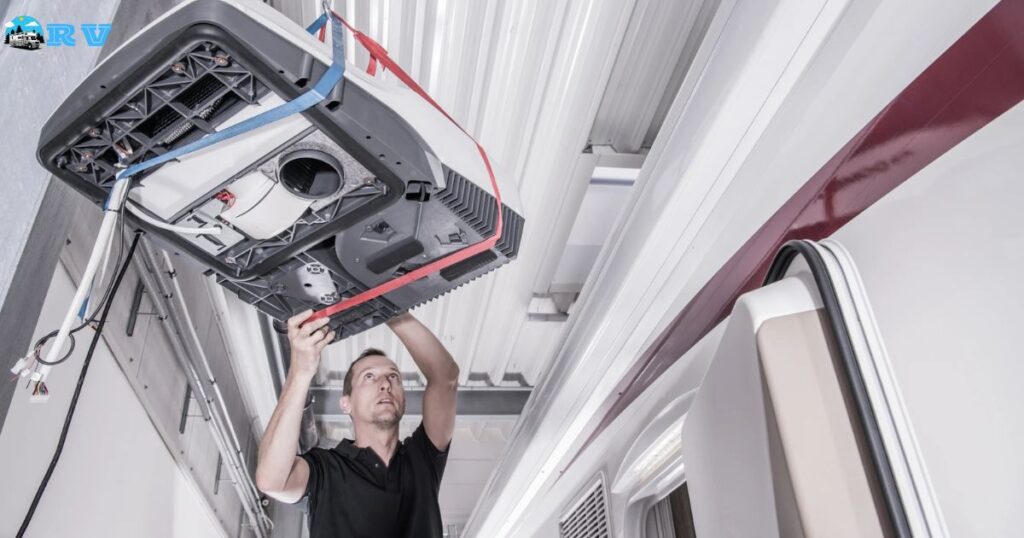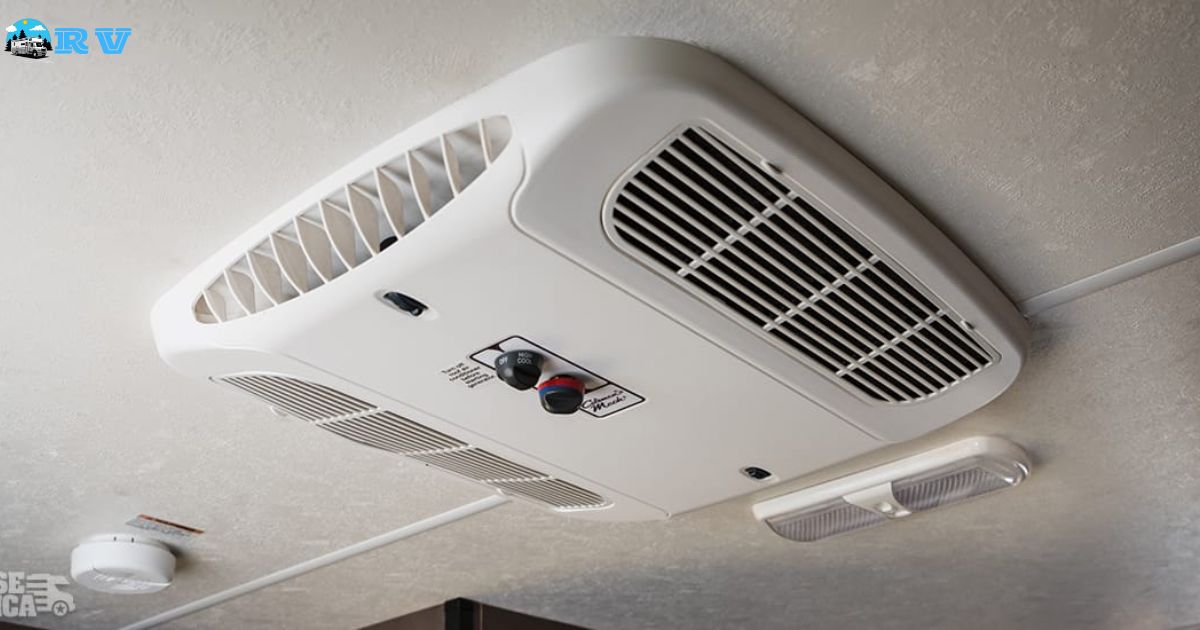Can you run an RV air conditioner while driving? Running an RV air conditioner while driving refers to the practice of operating the air conditioning system in a recreational vehicle (RV) while the vehicle is in motion. This is typically done to maintain a comfortable temperature inside the RV, especially during hot weather, without the need to rely solely on the vehicle’s dashboard air conditioning system.
Wondering if you can run an RV air conditioner while driving? It’s a common question among RV enthusiasts, and the answer isn’t a simple yes or no. There are various factors to consider, including the size and capacity of your RV’s generator, the electrical system’s capability, and any local regulations or restrictions.
Running an RV air conditioner while driving can be a convenient way to stay comfortable during your journeys. It’s essential to know that some RVs are equipped to handle this, while others may require modifications or additional equipment to make it possible. Understanding the ins and outs of this practice can help you make informed decisions for a more enjoyable and relaxed RV travel experience.
Assessing the Feasibility
Running an RV air conditioner while driving is indeed feasible, but it’s not a one-size-fits-all solution. The feasibility depends on the type of RV you have and the specific air conditioning system in place. Let’s delve into the possibilities and considerations.
Understanding the Benefits
Running the RV air conditioner while driving offers several benefits. It keeps the interior comfortable, making your journey more pleasant during hot weather. It can also help prevent heat-related issues, especially when traveling with pets or passengers who may be sensitive to high temperatures.
Potential Challenges and Limitations
While the benefits are evident, there are challenges and limitations to consider. The primary challenge is ensuring your RV’s systems can handle the load of the air conditioner while in motion. The limitations include power source constraints, legal restrictions in some areas, and potential safety concerns. Let’s explore these aspects in more detail.
RV Air Conditioning Systems Explained

Before you decide whether to run the RV air conditioner while driving, it’s essential to understand the components and operation of RV air conditioning systems. In this section, we’ll cover the types of RV air conditioners, power sources for RV air conditioners, and cooling capacity and efficiency.
Types of RV Air Conditioners
RVs typically come equipped with two main types of air conditioners: roof-mounted and portable units. Roof-mounted air conditioners are the most common and are integrated into the RV’s structure, while portable units are stand-alone systems that can be placed wherever needed. Each type has its advantages and limitations, which affect the feasibility of running them while driving.
Power Sources for RV Air Conditioners
RV air conditioners rely on different power sources. The most common sources are generators, shore power connections, and inverter systems. The type of power source your RV uses can impact your ability to run the air conditioner while driving. To assess the feasibility, you need to consider the capacity of your generator and the electrical compatibility with your air conditioner.
Cooling Capacity and Efficiency
The cooling capacity of your RV air conditioner is a crucial factor to consider. It’s measured in BTUs (British Thermal Units) and determines how effectively the unit can cool your RV. Higher BTU ratings provide more cooling power, but they also require more energy. We’ll discuss how the cooling capacity and efficiency of your RV air conditioner affect your ability to run it while driving.
Preparing Your RV for Running the Air Conditioner While Driving
For those who want to run the RV air conditioner while driving, some preparations are necessary. This section will cover topics such as generator capacity and upgrades, electrical system considerations, proper installation, and safety measures on the road.
Generator Capacity and Upgrades
Your RV’s generator plays a pivotal role in the ability to run the air conditioner while driving. If your existing generator doesn’t have the necessary capacity, you may consider upgrading it to a more powerful one. We’ll explore the options for generator upgrades and what to look for when choosing the right one.
Electrical System Considerations
Your RV’s electrical system must be capable of handling the additional load of the air conditioner while in motion. In this sub-section, we’ll delve into the importance of a robust electrical system, potential modifications required, and how to ensure compatibility with your RV air conditioner.
Proper Installation and Safety Measures
Proper installation is critical to ensuring that running the RV air conditioner while driving is safe and effective. We’ll provide guidance on the correct installation procedures, along with safety measures and precautions to take when using the air conditioner on the road.
Legal and Safety Aspects of Running an RV Air Conditioner While Driving
Before hitting the road with the RV air conditioner running, it’s essential to consider legal regulations and safety aspects. In this section, we’ll discuss local regulations and restrictions, as well as safety precautions that should be a part of your travel routine. If you’ve experienced issues like your RV air conditioner tripping the breaker, we’ll provide some tips to address those as well.
Local Regulations and Restrictions
Different areas may have varying regulations regarding running an RV air conditioner while driving. Some regions may prohibit it due to safety concerns or energy consumption. We’ll explore how to stay compliant with local regulations and adapt your plans accordingly.
Safety Precautions on the Road
Running an RV air conditioner while driving can impact your vehicle’s stability and fuel efficiency. We’ll discuss safety precautions, such as maintaining a balanced load, proper ventilation, and monitoring the generator, to ensure a safe journey.
Tips for Efficiently Running an RV Air Conditioner While Driving
To make the most of running your RV air conditioner while driving, you’ll need to adopt some strategies for efficiency. We’ll cover temperature control methods, maximizing energy efficiency, and other tips for a comfortable and economical journey.
Temperature Control Strategies
Achieving and maintaining the right temperature in your RV is crucial for comfort. We’ll discuss methods like zoning, shading, and awnings to help you manage the temperature efficiently.
Maximizing Energy Efficiency
Running an RV air conditioner while driving can consume a considerable amount of energy. We’ll provide practical advice on maximizing energy efficiency, from routine maintenance to optimizing the operation of your air conditioning system. Additionally, we’ll include a table comparing the energy consumption of different types of RV air conditioners.
Alternatives to Running the RV Air Conditioner While Driving
If running the RV air conditioner while driving doesn’t align with your preferences or needs, there are alternative ways to stay cool during your journey. We’ll explore options such as using roof vents and fans, as well as strategic route planning for climate control.
Using Roof Vents and Fans
Roof vents and fans provide an excellent way to circulate air and maintain a comfortable interior temperature without the need for an air conditioner. We’ll explain how to use these devices effectively and when they might be a better choice than running the air conditioner while driving.
Strategic Route Planning for Climate Control
Planning your travel route with climate control in mind can help you avoid extreme temperatures and reduce the need to run the air conditioner while driving. We’ll discuss how to plan your journeys to make the most of favorable weather conditions.
FAQs
Can I run any type of RV air conditioner while driving?
You can run most RV air conditioners while driving, but it depends on the type and your RV’s power source. Portable units can be more flexible, while roof-mounted units may require specific conditions.
What is the primary power source for RV air conditioners?
The primary power source for RV air conditioners is the onboard generator, though some can also be run on shore power connections or inverter systems.
Are there legal restrictions for running an RV air conditioner while driving?
Legal restrictions vary by location. Some areas have regulations against running an RV air conditioner while driving due to safety concerns or energy consumption. Check local laws before doing so.
How can I improve the efficiency of running an RV air conditioner while driving?
To improve efficiency, you can balance the load in your RV, use shading or awnings, and keep up with maintenance for your air conditioning system.
What are alternative ways to stay cool in an RV without running the air conditioner while driving?
Alternatives include using roof vents and fans to circulate air or planning your route to avoid extreme temperatures whenever possible.
Conclusion
In your RV adventures, staying cool on the road is a real possibility. Running your RV air conditioner while driving can be a great way to enjoy comfort and safety during hot journeys. But remember, it’s not a one-size-fits-all solution. You need to assess your RV’s capacity, ensure compliance with local rules, and follow safety guidelines.
If running the air conditioner while driving doesn’t suit your situation, alternative methods like roof vents and careful route planning offer effective ways to maintain a comfortable climate inside your RV. The key is to make choices that fit your specific needs and ensure a smooth and enjoyable travel experience.











